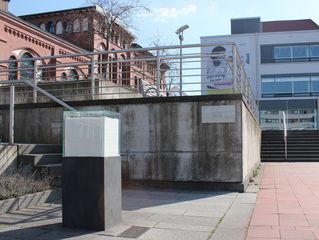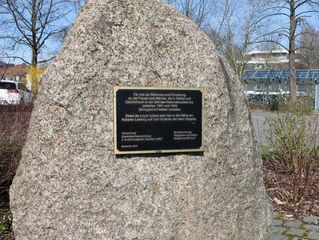Memorial stele for the victims of forced sterilisation in Bethel
Sterilisations were carried out in Bethel between 1933 and 1945. A stele on Bethelplatz is dedicated to the victims of these "racial hygiene measures". Designed by the Bielefeld artist Gabriele Undine Meyer, the memorial was inaugurated with a ceremony in June 2000. The TRIALOG working group - consisting of people with experience of psychiatry, relatives and employees - developed the memorial text together with the Bethel board. The text was copied by hand a total of 1.176 times and displayed in a glass case for everyone to see - that was how many victims were known at the time.
In 2019, an explanatory plaque was installed in the immediate vicinity of the stele to supplement the status of further research into the forced sterilisations in Bethel. Following further historical research, 1.665 cases are now known in which women and men were sterilised in Bethel in accordance with the "Law for the Prevention of Hereditarily Diseased Offspring".




